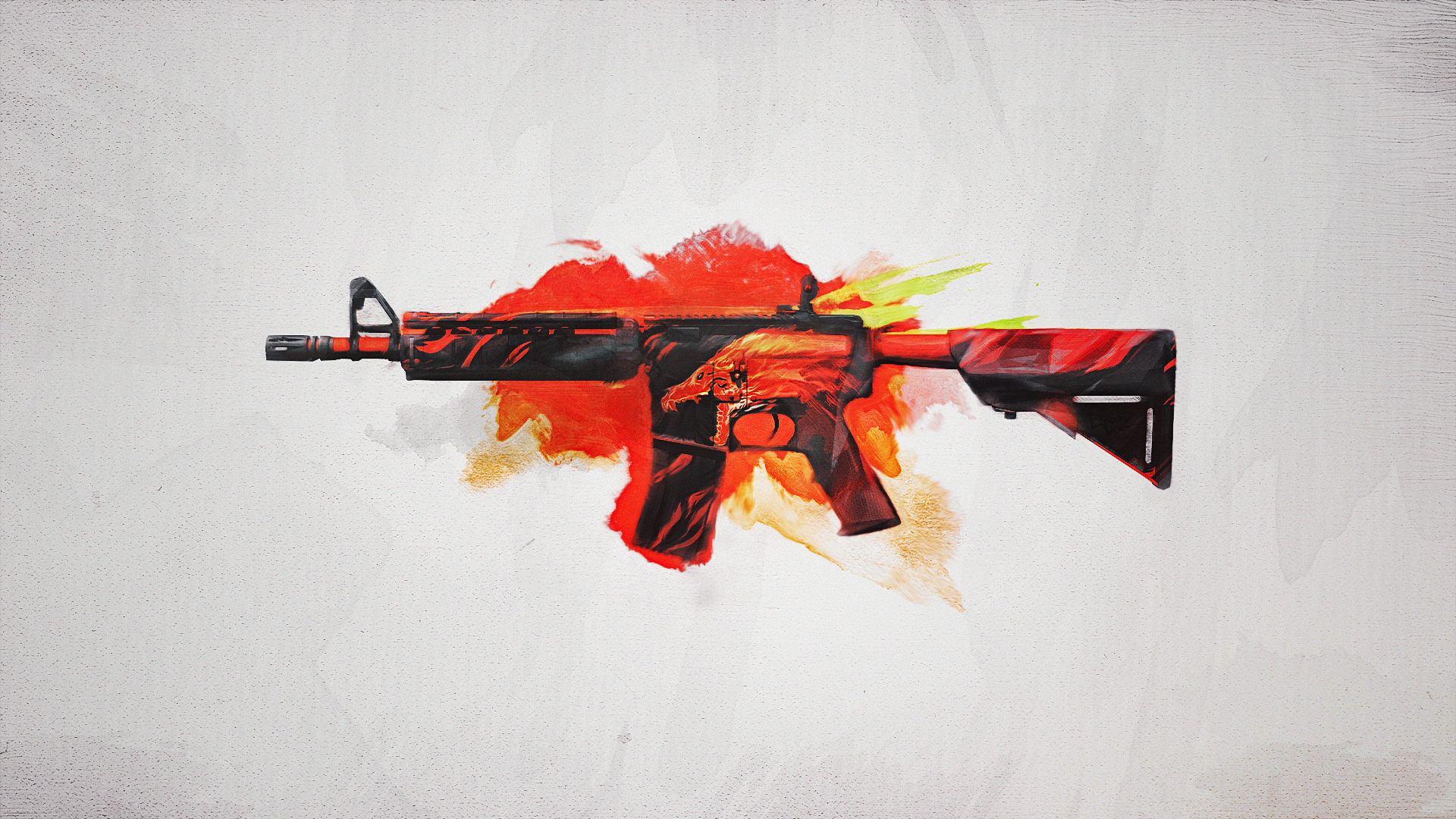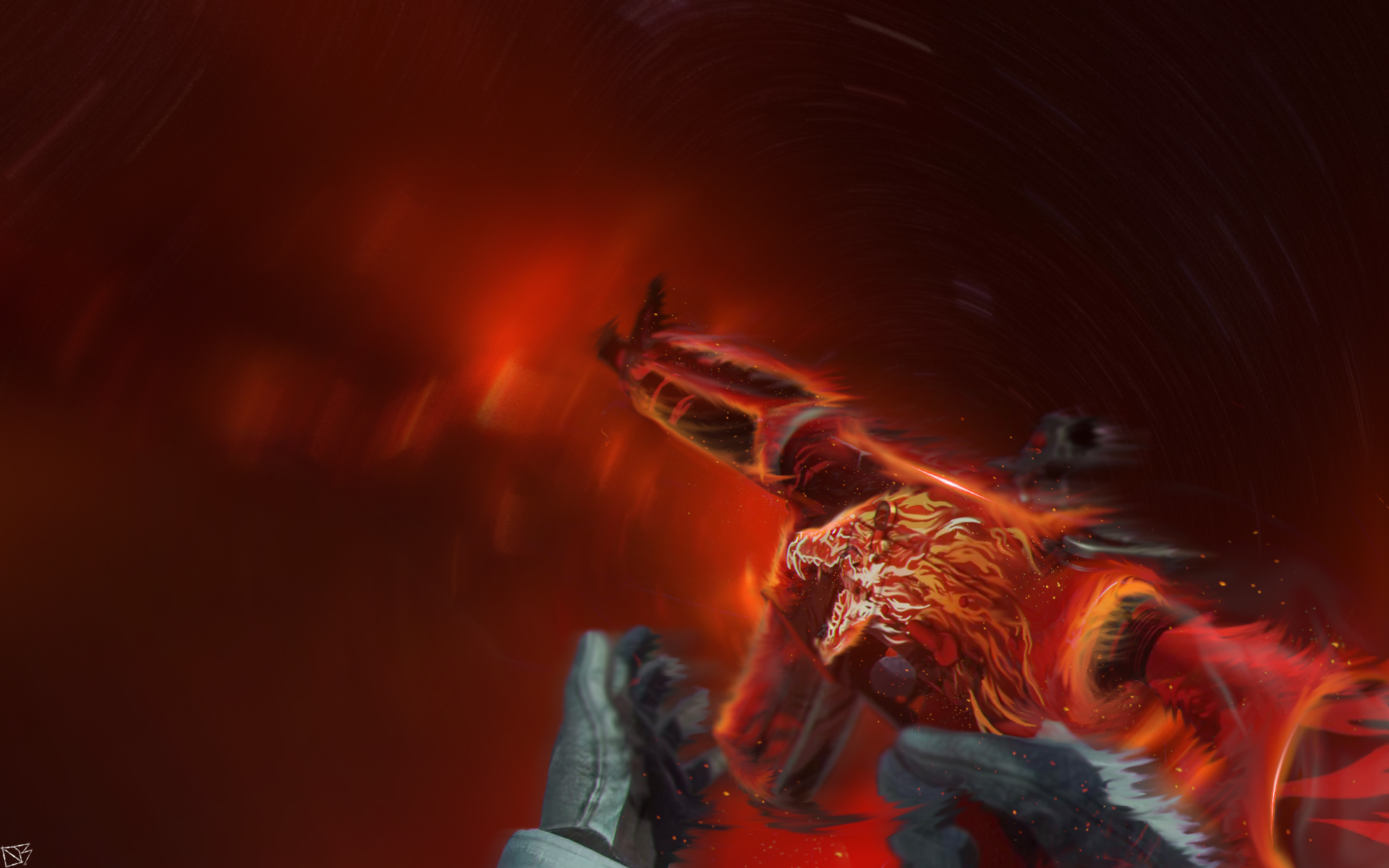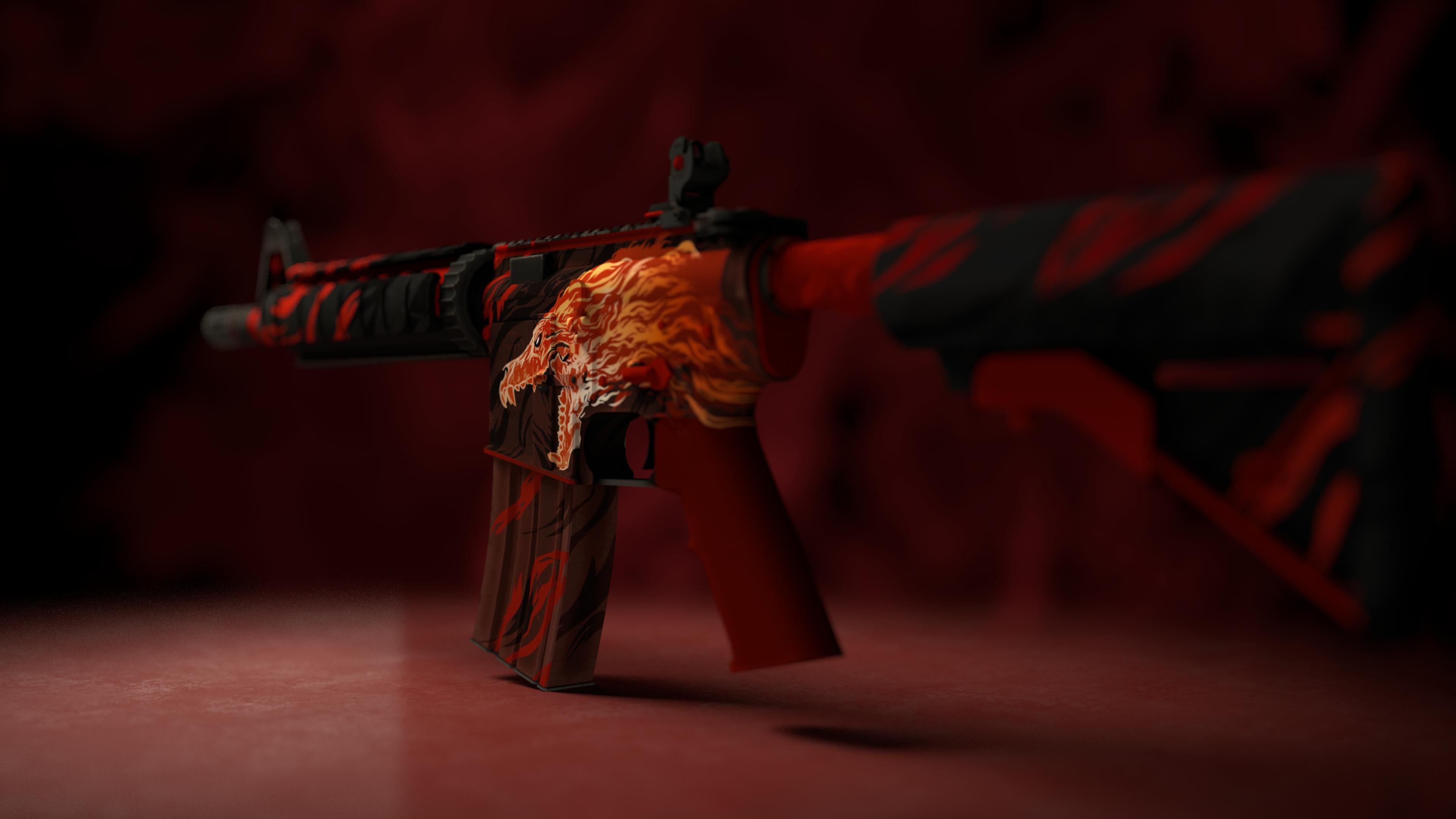How a stolen skin became CS:GO's most legendary gun
From covert to contraband, Howl's moving caste.

Skins are a big deal in Counter-Strike: Global Offensive. Since launching in the Arms Deal update in August 2013, gun paint has become as much a part of Counter-Strike culture as defusing bombs and rescuing hostages. For most of us, a weapon 'finish' or skin is a fun way to liven up your arsenal—a reward system within an already rewarding FPS. But skins are also a contentious business and, more importantly, a symbol of a player's status. And when it comes to showing off, there's no gun more likely to drive others green with envy than the M4A4 Howl—the closest thing Counter-Strike has to a legendary gun.
The M4A4 Howl stands alone when it comes to gun finishes in Counter-Strike. Though you’ll occasionally see other guns and knives listed at a higher price, the StatTrak M4A4 Howl (Factory New) is uniquely valuable. The rarity of the Howl doesn't come from its gorgeous red striping and the fiery creature emblazoned along the left side of the receiver, but rather from the story of theft, DMCA takedowns, and banned players that made it famous. It could've just vanished from the game forever, but Valve made it a legend.

It's just skin
The story of the Howl traces all the way back to 2010, when Valve made huge changes to one of its most popular games, Team Fortress 2, that introduced a microtransaction economy called the Mann Co. store. At the time, no one could foresee how this move would impact just about every Valve game as players began trading, crafting, and buying a variety of items using Team Fortress 2's virtual marketplace. Only a year later, Valve expanded on the system by creating the Steam Workshop, where modders and artists from the community were invited to submit their designs to be used and voted on by other players. If those designs were especially popular, Valve would officially include them in updates to Team Fortress 2.
It could've just vanished from the game forever, but Valve made it a legend.
In the two years that followed, the Steam Workshop began creeping its way into other games like Dota 2 and Skyrim, providing a unified marketplace for user-generated content and, for Valve's games, creating a birthing ground for one of the most complex microtransaction economies in all of gaming. It wasn't until 2013 that the Workshop found its way to CS:GO for players to design and share new maps and game modes. At the time Counter-Strike was still a divided community, with many players choosing to stick with the two previous iterations Counter-Strike: Source and Counter-Strike 1.6. It was only after Valve released the Arms Deal update—finally letting players purchase and trade custom skins for their weapons—that CS:GO transformed into the multiplayer and esports phenomenon that it is today.

In 2014, the marketplace for skins was exploding with players routinely trading rare knives and gun finishes for hundreds of dollars. Artists, inspired by the wads of cash modders were making if Valve chose their designs to be sold in their games, began flooding the CS:GO Workshop with their ideas for the next hot skin that would have players in a frenzy—but not all of those ideas were original.
On March 30, 2014, a skin and a sticker were uploaded to the workshop under the title 'Howling Dawn' by Steam users Auzzii and sic. The skin, which would go on to earn more than 4,500 positive ratings, was supposedly the original work of Auzzii. In the description he wrote, "I wanted to make an intresting [sic] illustration, so I created this. It originated from a picture of my dog, it's kind of taking the ♥♥♥♥ out of him in a way as he's the complete opisite [sic] to the wolf."
A month later that skin and sticker were officially added to CS:GO as part of the Huntsman collection because of their popularity among the Workshop community. These collections would drop special cases in-game that players could purchase keys to open and earn one of the skins contained within. Those that were lucky opened up a case to find a flashy new M4A4 Howl.
The biggest gaming news, reviews and hardware deals
Keep up to date with the most important stories and the best deals, as picked by the PC Gamer team.
With over 7 years of experience with in-depth feature reporting, Steven's mission is to chronicle the fascinating ways that games intersect our lives. Whether it's colossal in-game wars in an MMO, or long-haul truckers who turn to games to protect them from the loneliness of the open road, Steven tries to unearth PC gaming's greatest untold stories. His love of PC gaming started extremely early. Without money to spend, he spent an entire day watching the progress bar on a 25mb download of the Heroes of Might and Magic 2 demo that he then played for at least a hundred hours. It was a good demo.


